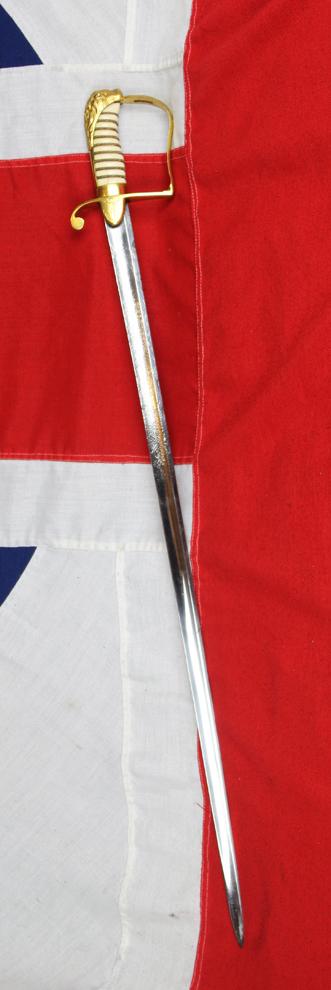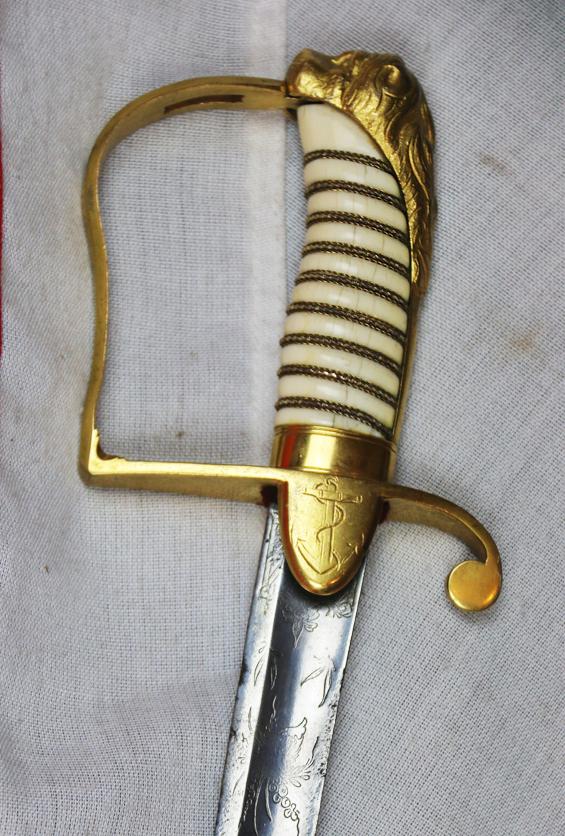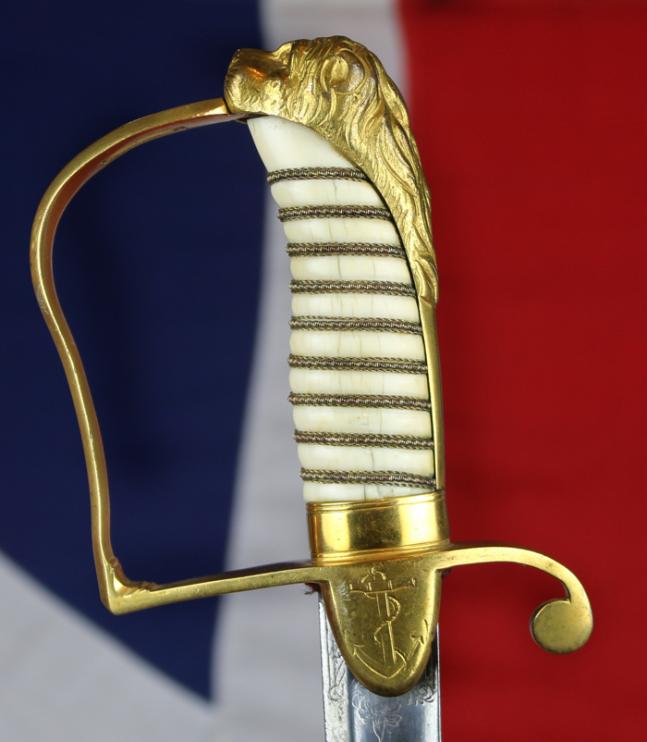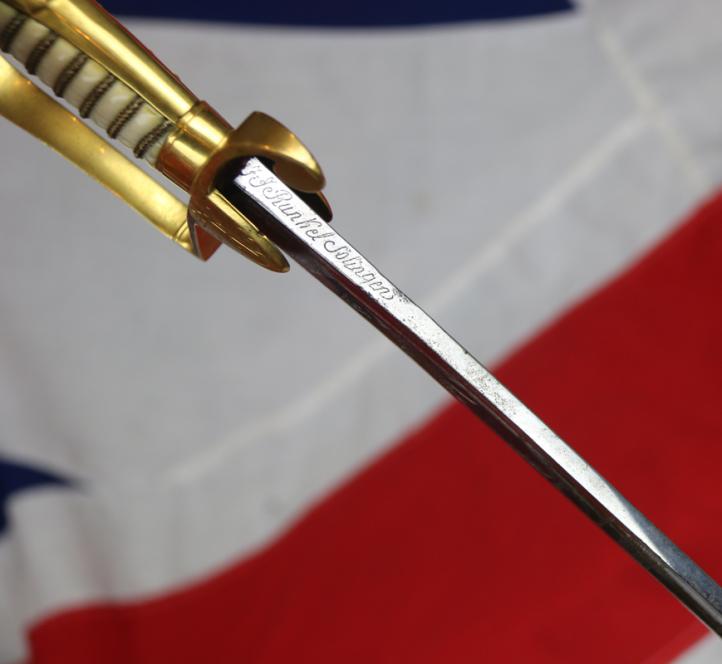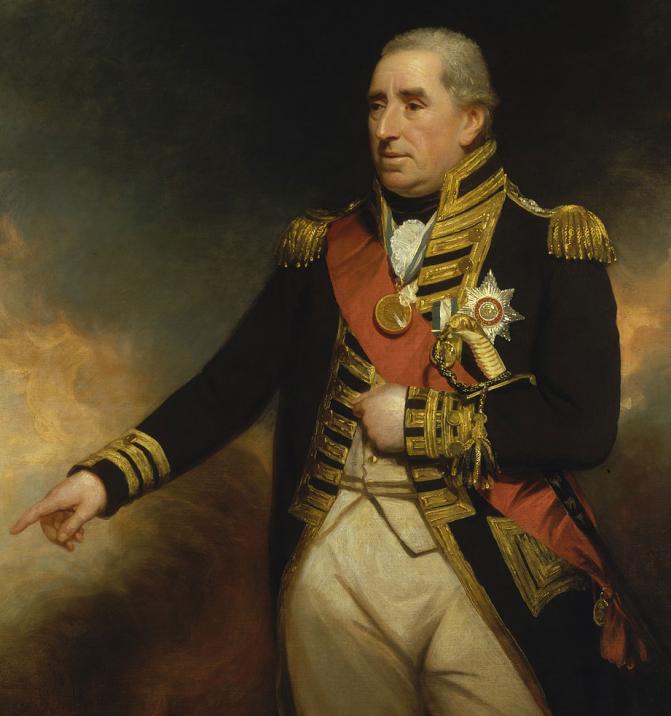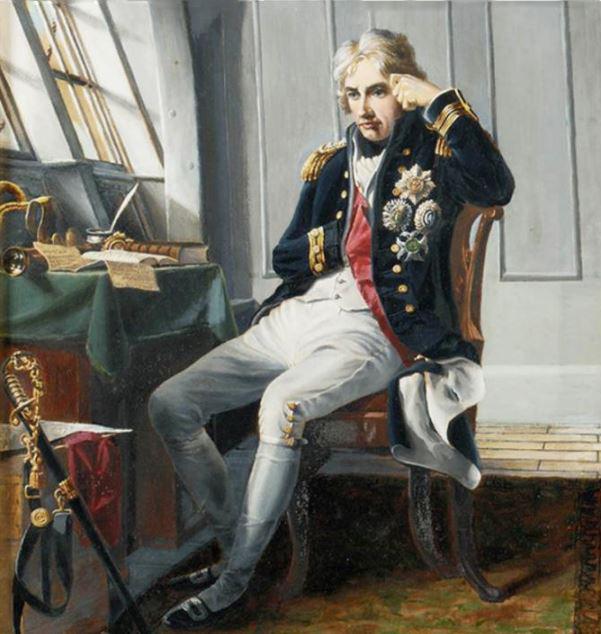RESERVED For Mr L. USA. A Stunning, Battle of Trafalgar Period, Royal Naval Senior Officer's Sword, Identical to the Sword Used by Admiral Nelson, and used by one of the Nelson's Brother Admirals or His Captains in the Greatest Navy in the World
A stunning 1805 pattern Royal Naval combat weight sword commonly known as the admiral’s pattern, exactly the form of sword as was carried by Nelson at the Battle of Trafalgar. A photo in the gallery shows Nelson's sword from Trafalgar. It was taken from his cabin after the battle and sent to his mistress Lady Hamilton, plus two enemy admiral's swords.
Lions-head pommel, wire bound bone grip symbolising highest naval rank and two engraved traditional fouled anchor langets, fully deluxe engraved with King George IIIrd cypher, plus scrolls.
In 1805, the Royal Navy decided to introduce some uniformity in the swords carried by it's officers and issued it's first regulation pattern sword. It was the hilt was influenced by the 1803 Infantry sabre which started to be used by Naval and Royal Marine officers. However a straight blade was settled upon, along with a cavalry style stirrup hilt. Although officially adopted in 1805 there were certainly numerous examples made in the 5 to 10 years prior to the official 1805 date of its pattern title.
Ever at the forefront of military fashion, Lord Horatio Nelson would have been one of the first to adopt the new pattern and after his death in the famous Battle of Trafalgar, his 1805 pattern sword was returned to England with the rest of his belongings. Today his 1805 sword is on display at the Nelson Museum.The Battle of Trafalgar (21 October 1805) was a naval engagement fought by the British Royal Navy against the combined fleets of the French and Spanish Navies during the War of the Third Coalition (August–December 1805) of the Napoleonic Wars (1803–1815).
As part of an overall French plan to combine all French and allied fleets to take control of the English Channel and thus enable Napoleon's Grande Armée to invade England, French and Spanish fleets under French Admiral Villeneuve sailed from the port of Cádiz in the south of Spain on 18 October 1805. They encountered the British fleet under Admiral Lord Nelson, recently assembled to meet this threat, in the Atlantic Ocean along the southwest coast of Spain, off Cape Trafalgar, near the town of Los Caños de Meca. Villeneuve was uncertain about engaging the British, and the Franco-Spanish fleet failed to fully organise. In contrast, Nelson was decisive, organising the British fleet into two columns sailing straight into the enemy to pierce its wavering lines.
In a particularly fierce battle, 27 British ships of the line fought 33 French and Spanish ships of the line. Although the lead ships of the British columns were heavily battered, with Nelson's flagship HMS Victory nearly disabled, the greater experience and training of the Royal Navy overcame the greater numbers of the French and Spanish navies. The Franco-Spanish fleet lost 22 ships; the British lost none. During the battle, Nelson was shot by a French musketeer, and he died shortly before the battle ended. Villeneuve was captured along with his flagship Bucentaure. He later attended Nelson's funeral while a captive on parole in Britain. Admiral Federico Gravina, the senior Spanish flag officer, escaped capture with the remnant of the fleet. He died five months later from the wounds he had sustained during the battle.
The victory confirmed the naval supremacy Britain had established during the course of the eighteenth century, and was achieved in part through Nelson's departure from the prevailing naval tactical orthodoxy of the day. Conventional battle practice at the time was for opposing fleets to engage each other in single parallel lines, in order to facilitate signalling and disengagement and to maximize fields of fire and target areas. Nelson instead arranged his ships into columns sailing perpendicularly into the enemy fleet's line. We show in the gallery Nelson's sword, taken from his cabin after his death at Trafalgar, plus the sword of Admiral Villeneuve , Commander-in-Chief of the combined Naval Forces of France and Spain was surrendered to Lord Collingwood on October 21, 1805, and the sword of Admiral Cisneros that was surrendered from the Spanish navy. All of the three admiral's swords are in the Monmouth museum. Bright polished blade with areas of old pitting. No scabbard
Code: 23396

